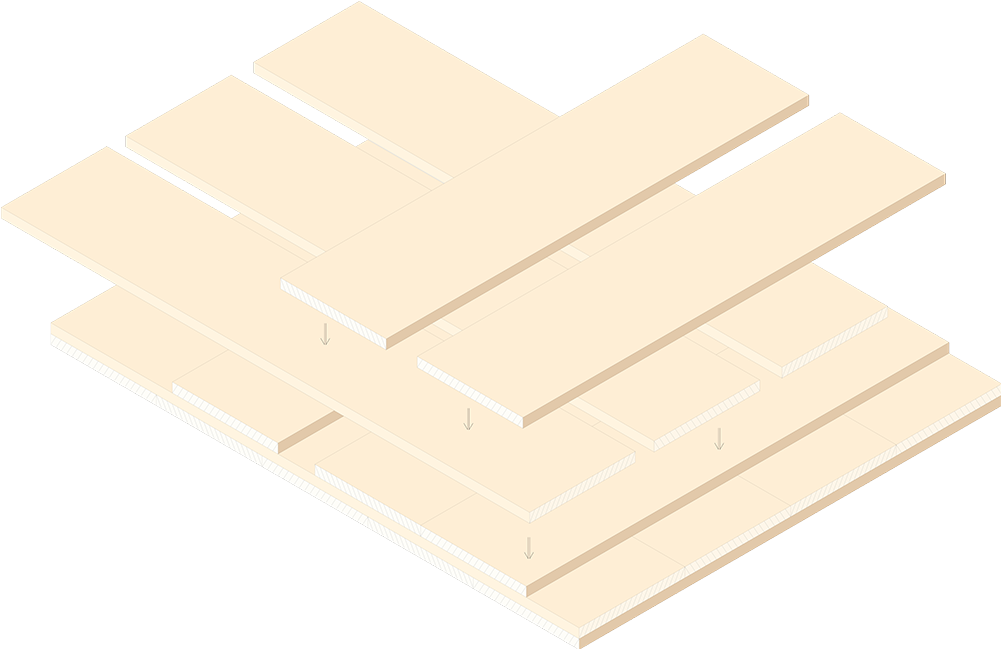WHAT IS CROSS-LAMINATED TIMBER?
Cross-laminated timber (also known as CLT) is a solid timber construction element where 3 to 9 layers of sawn timber are permanently glued together at right angles to each other to form solid boards.
We at Mayr-Melnhof Holz exclusively use soft wood as raw material for our cross-laminated timber production.
The cross-lamination structure guarantees dimensionally stable and rigid components that have a very low net weight. These cross-laminated timber boards have excellent structural and physical characteristics. This makes them suitable for nearly all construction requirements.

Building
Cross-laminated timber is used for walls, ceilings or roof constructions. They can be used for buildings with up to 6 storeys, and they can be higher than conventional wooden buildings. In addition, cross-laminated timber is the preferred material for urban re-densification, that is, the addition of storeys on existing buildings. Its low weight makes it the ideal material for such applications. An impressive example of what is possible with this timber construction product in the industrial and commercial building sector is the new Mayr-Melnhof Holz cross-laminated timber plant in Leoben. The load-bearing building structure, the façade and the flat roof are made of cross-laminated timber, glued-laminated timber and three-layer boards produced on site. 17,000 m³ of timber were used, 11,500 m³ of which came with a PEFC certificate.
- Single and multi-family houses
- Modular and temporary buildings
- Municipal buildings such as kindergartens, schools and nursing homes
- Commercial, office and industrial buildings
- Agricultural buildings
- Buildings for tourism such as hotels and restaurants
- Leisure-time facilities such as sports halls


“Cross-laminated timber (MM crosslam, CLT, X-Lam) is produced at the Mayr-Melnhof Holz locations in Gaishorn am See and in Leoben. This product is PEFC-certified, which means that the raw materials used originate from sustainably managed forests with completely traceable documentation.”
Florian de Monte, Head of Sales MM crosslam (CLT)
Cross-laminated timber is good for the climate
In many cases, conventional CO₂-intensive construction materials such as concrete or steel can be replaced by wood. This protects the climate in two ways: firstly, by binding carbon in the wood and secondly, by avoiding CO₂ emissions caused during the production processes of conventional constructions materials. As a natural and renewable construction material, cross-laminated timber provides an important contribution to active climate protection.


